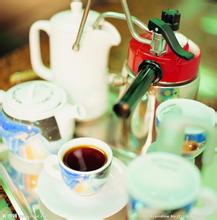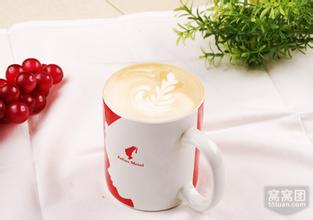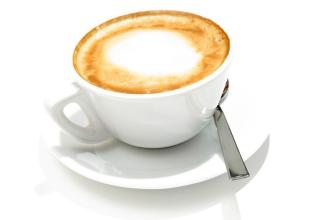The taste of Bolivian coffee with a bitter taste an introduction to the characteristics of fine coffee in the manor area.
Rich in mineral resources, mainly tin, antimony, tungsten, silver, zinc, lead, copper, nickel, iron, gold and so on. Mineral deposits are rich, with tin reserves of 1.15 million tons, ranking second in the world; iron reserves of 45 billion tons, second only to Brazil in Latin America; and lithium reserves of 100 million tons, ranking first in the world. [7]
Petroleum and natural gas
Bolivia is rich in oil and gas resources. Proven oil reserves are 929 million barrels and proven natural gas reserves are 52.3 trillion cubic feet as of 2013.
Rich in resources, the forest covers an area of 530000 square kilometers (53 million hectares). The main wood varieties are: mahogany, red juniper, American oak,
Sandbox wood, heavy ant wood, Yibei and Longfeng plant.
Bolivia is rich in hydropower resources, with a potential developable hydropower installed capacity of 39850 megawatts, with a developed installed capacity of 480 megawatts by 2013, with a degree of development of only 1.2%, with great potential for hydropower development. Bolivia is also rich in wind and solar energy resources, with a maximum wind speed of 16 meters and 7 seconds in La Paz. [7]
The total population is 10.624 million. The urban population is 6.574 million, accounting for 65% of the total population, and the rural population is 3.454 million, accounting for 35% of the total population.
Bolivia is a multi-ethnic country with mainly indigenous peoples, including Indians of all ethnic groups; Mestizo: European and African immigrants and indigenous peoples
Mixed-race offspring (about 30% of the Bolivian population) and European and African immigrants (about 15% of the total population). According to statistics, there are 37 indigenous ethnic groups in Bolivia, of which Quechua and Ayimala have the largest population, 1.558 million and 1.279 million respectively, and Guaran 78000 has an oval shape in the middle of the Bolivian national emblem.
There are patterns of sun, mountain peak, bread tree, camel sheep and grain on the round surface. There are ten five-pointed stars in the lower half of the circle, representing the nine provinces that make up Bolivia and the coastal provinces seized by Chile; the top half is written "Bolivia" in Spanish. Three national flags are hung on each side of the oval; behind them are crossed sticks and weapons, symbolizing authority; and on the left, there is a "cap of freedom" at the top of the bar. At the top of the oval is a large vulture called the Condor, symbolizing strength and freedom. The eagle is decorated with laurel and olive branches, representing the pride of the country's people in national freedom and their desire to live in harmony with the people of other countries. In the past, Bolivian coffee trees used to serve as hedges and ornaments around the garden. Real commercial production began in the early 1950s. The coffee industry in Brazil was seriously damaged by the great frost in 1975, while Bolivia (Bolivia) benefited from it and developed rapidly.
Coffee producing areas in Bolivia:
Bolivian coffee is grown at an altitude of 180,000,670 meters.
Features of Bolivian coffee:
Flavor: high quality mixed coffee
Suggested baking method: medium to deep barbecue
★: general
The market for Bolivian coffee:
The coffee grown in Bolivia, in which Arabic washed coffee beans are exported to Germany and Sweden, tastes not the best today and has a bitter Osher cup test report (an explosion in the middle of the pot, baking for 12 minutes).
Dry fragrance: various flowers, sweet vanilla, full aroma, sweet spices, honey
Wet fragrance: flower fragrance, refreshing perfume, sweet chocolate, berries
Sipping: many kinds of floral aromas, excellent cleanliness and fineness, fine vanilla sweet, delicate sugar, peaches, apricots, sour and sweet, premium Burgundy red wines, vanilla plants, green apples, white grapefruit, essential oil aromas, delicate and smooth touch, sweet finish and long-lasting aromas.
Record of in-depth visit to coffee producing areas in Bolivia
Osher's cup tester has served as the international judge of every CoE national competition, in terms of road conditions and climate, and even visa difficulties, Bolivia is the most difficult, but her coffee is so fragrant, even if the beer is also full of wild honey sweet, drink at room temperature, that beer is like foaming caramel syrup, so far

Important Notice :
前街咖啡 FrontStreet Coffee has moved to new addredd:
FrontStreet Coffee Address: 315,Donghua East Road,GuangZhou
Tel:020 38364473
- Prev

Bolivian coffee with long-lasting aroma: introduction to the characteristics of boutique coffee in manor area
The seat of the government and parliament, the largest city and political, economic and cultural center in the country, with a population of 2.7416 million. The city center, which is 3660 meters above sea level, is the seat of the government of La Paz, the capital of La Paz, the capital of the world. La Paz was founded in 1548 and means the city of peace in Spanish. [6] the legal capital of Sucre, the seat of the Supreme Court, population 284000, 2790 meters above sea level. 1538
- Next

Kenya Jinchu Coffee Flavor Manor with rich and perfect taste characteristics of boutique coffee
The coastal areas are plains, and most of the rest are plateaus with an average elevation of 1500 meters. The East African Rift Valley, Mount Kenya, the highest peak in Kenya, the eastern branch of Mount Kenya cuts across the north and south of the plateau, dividing the highland into east and west. The bottom of the Great Rift Valley is 450 miles below the plateau and 100 kilometers wide, with lakes of varying depths and many volcanoes standing. The northern part is
Related
- Detailed explanation of Jadeite planting Land in Panamanian Jadeite Manor introduction to the grading system of Jadeite competitive bidding, Red bid, Green bid and Rose Summer
- Story of Coffee planting in Brenka region of Costa Rica Stonehenge Manor anaerobic heavy honey treatment of flavor mouth
- What's on the barrel of Blue Mountain Coffee beans?
- Can American coffee also pull flowers? How to use hot American style to pull out a good-looking pattern?
- Can you make a cold extract with coffee beans? What is the right proportion for cold-extracted coffee formula?
- Indonesian PWN Gold Mandrine Coffee Origin Features Flavor How to Chong? Mandolin coffee is American.
- A brief introduction to the flavor characteristics of Brazilian yellow bourbon coffee beans
- What is the effect of different water quality on the flavor of cold-extracted coffee? What kind of water is best for brewing coffee?
- Why do you think of Rose Summer whenever you mention Panamanian coffee?
- Introduction to the characteristics of authentic blue mountain coffee bean producing areas? What is the CIB Coffee Authority in Jamaica?

